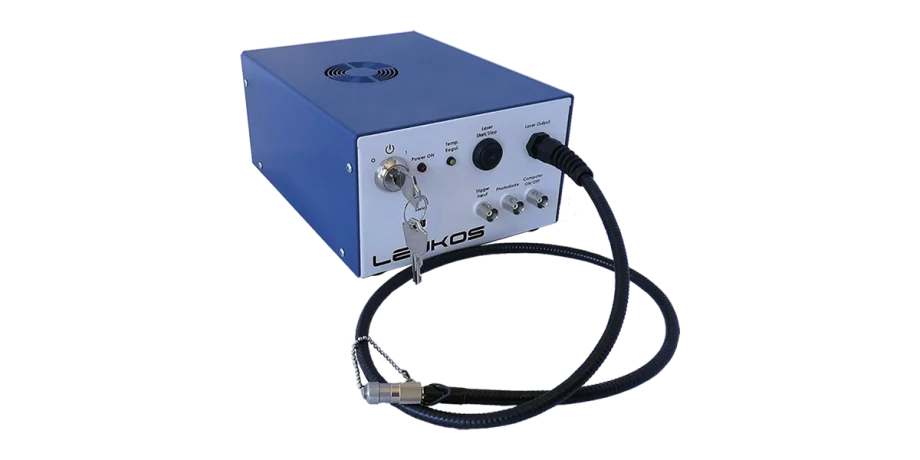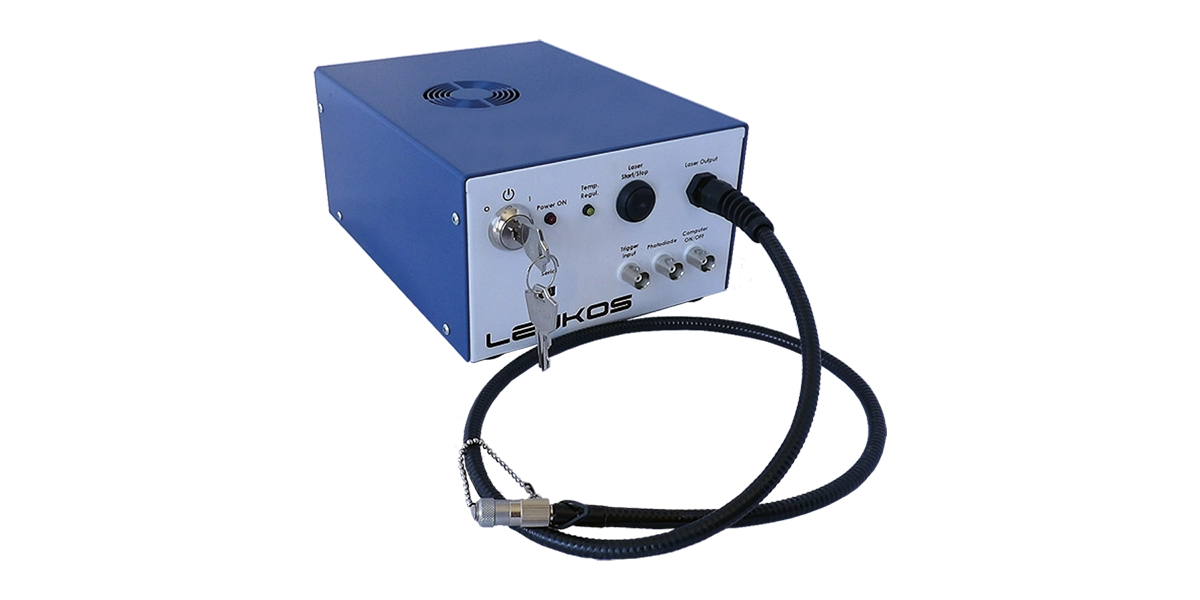A Low-Cost, Multi-Purpose Supercontinuum Laser for any Lab
SAMBA is a low-cost supercontinuum laser that offers multiple wavelengths from UV to IR with a flat, stable, broadband spectrum and a fibered output. Turn-key, benchtop, maintenance-free, robust and user-friendly, supercontinuum sources are several orders of magnitude brighter than incandescent lamps and offer greater spectral bandwidth than sLEDs. They are convenient for general purpose laboratory applications such as spectroscopy, optical component characterization, interferometry, optical metrology, fluorescence microscopy and more.
Different versions of SAMBA are available, providing different spectral power densities as shown in the graph below :
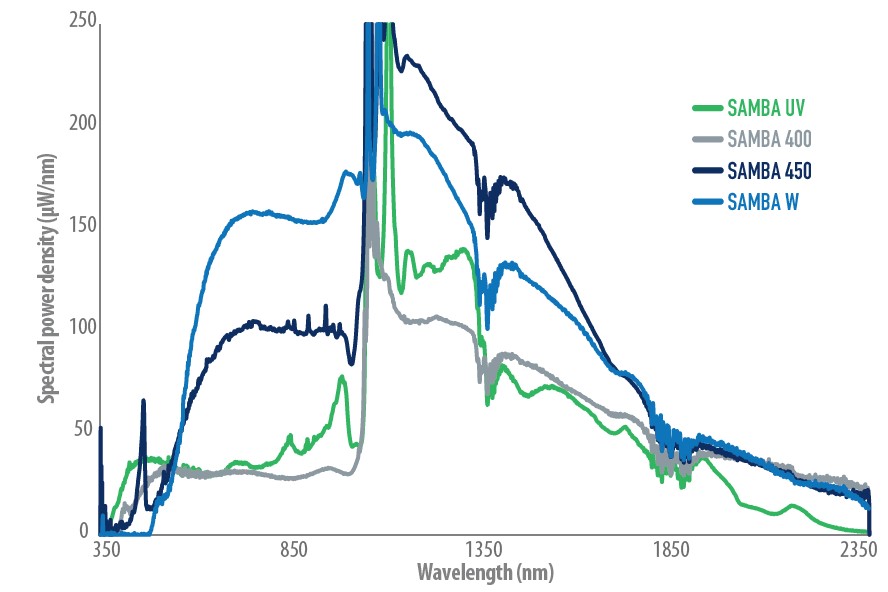
The user can select different output collimators for SAMBA (lens or achromatic), as well as add optional tunable filters (POP, BEBOP or TANGO) depending on the application.
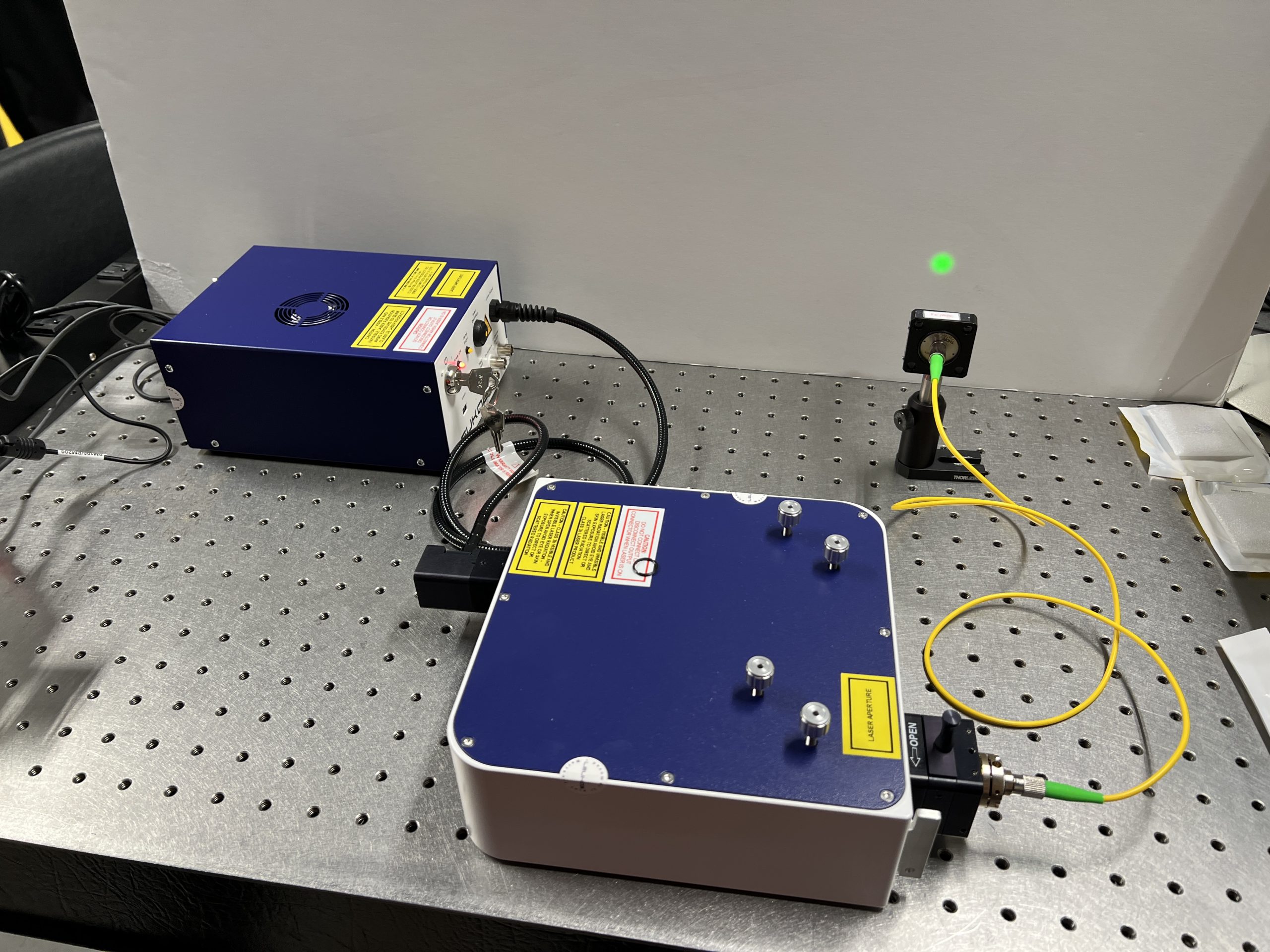
Features of SAMBA low-cost supercontinuum laser
- Wavelength: This reliable all-fibered laser source covers from UV to NIR: 340-2400 nm
- Repetition rate: Select models have a fully adjustable repetition rate
- Trigger: Triggerable range from 10 Hz up to 15 kHz (typical ~20 kHz)
- Pulse width: sub-ns
Leukos supercontinuum laser sources are based on the development and use of new generation optical fibers. These waveguides enable an extreme confinement of the electromagnetic field and a high conversion efficiency by means of nonlinear effects. The interaction of a high peak power pump laser with the material constituting the fiber allows to generate a multitude of wavelengths (spectral broadening), otherwise called a supercontinuum.
Leukos supercontinuum lasers cover wavelengths from UV (320 nm) to Mid-IR (9500 nm), with different modes of operation (from pulse-on-demand (10 Hz) to quasi-CW (MHz)) and different pulse widths (picosecond, sub-nanosecond, nanosecond). The desired spectral band as well as the spatial profile of the fiber output beam can be adapted to the target application.
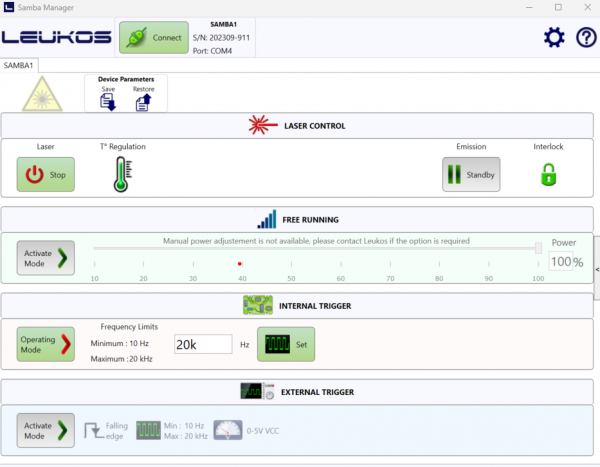
Supercontinuum lasers are light sources that combine the benefits of broadband lamps (ultraviolet/visible/infrared emission) and lasers (excellent beam quality , spatial coherence, and high brightness).
To visit the manufacturer’s page LEUKOS, click here
To visit our spectroscopy products page, click here
SAMBA low-cost supercontinuum laser is used for the following applications:
Imaging
Supercontinuum-based imaging empowers your applications in biology, medicine, materials science and many other areas. The following techniques are commonly used:
- Optical coherence tomography
- Transmission imaging
- Confocal microscopy
- Multiphoton microscopy
- Coherent Raman microscopy
Spectroscopy
Our supercontinuum sources are intrinsically suitable for a great variety of spectroscopy experiments, where broadband laser operation is required in the ultraviolet, visible or infrared.
- Ellipsometry
- Spectral imaging
- Spectral reflectivity imaging
- Cavity ring down spectroscopy
- Infrared spectroscopy
- Time-resolved spectroscopy
- Vibrational spectroscopy
Remote Sensing
Are you looking for new solutions of pollution analysis, gaz detection, wind sensing, vegetation monitoring? Think supercontinuum. The supercontinuum approach will revolutionize your system of terrestrial, oceanic or atmospheric sensing.
- Light detection and ranging (LIDAR)
- Hyperspectral imaging
Metrology
Leukos supercontinuum sources are excellent for the broadband characterization of optical components. They are the perfect tool for accurate measurement in the ultraviolet, visible or infrared.
- Transmittance
- Reflectance
- Dispersion
- Birefringence
- Cut-off wavelength
- Detector responsivity
Particle Analysis
Multiple wavelength operation is a powerful technique for analysing cells or particles, by means of fluorescence and/or scattering measurement. For example, this multiparametric approach can be used to differentiate blood cell subpopulations. In this context, supercontinuum sources provide you with an incredible choice of excitation wavelengths. Need to analyze cells in flow or detecting nanoparticles in food? Try the supercontinuum solution.
- Flow cytometry
- Nanoparticle detection
- Particle size analysis
- Particle shape analysis
- Microfluidics particle sorting

